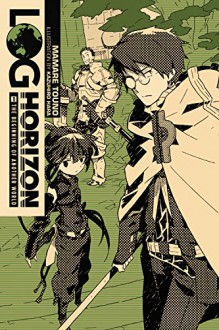
Fuyuki Kanda is a widowed music teacher who decides to buy a homely one-year-old cat at a pet store. The cat, who he names Fukumaru, is worried that his new owner will take him back or abandon him, but luckily for him, Mr. Kanda adores him.
This series is sweet, gentle, and warm, and I absolutely love it. I found out about it via a review on The Manga Critic, and then I kept coming across it via other sources until I finally broke down and bought it. I'm so glad I did.
This had some of the usual things you'll find in cat manga: a newbie cat owner who has to learn some of the basics, shopping for supplies at the pet store, and kitty antics, like scratching on things they're not supposed to, being goofy, and inadvertently making a mess. However, this first volume was as much about Kanda as it was about Fukumaru, and watching these two lonely characters love each other, become accustomed to each other, and form a little family together was a treat.
There were flashbacks for both Fukumaru and Kanda. Fukumaru's showed him as a kitten - remembering his mother and gradually realizing that no one wanted him. Kanda's showed him and his wife, and what their lives had been like over the years. They'd intended to get a cat together but never got around to it. They had children, and readers haven't yet been given enough information to know whether they just live too far away to regularly visit or whether Kanda's estranged from them. At any rate, he lived alone, and it was apparent that both the cat and the man had become a little depressed before they came into each other's lives.
A few other character POVs popped up here and there: Kobayashi, Kanda's dog-loving childhood friend, Yoshiharu Moriyama, one of Kanda's energetic young coworkers, and Miss Sato, the pet store employee who assisted Kanda. They all provided different views of Kanda and/or Fukumaru, which I appreciated. For example, Moriyama saw Kanda as the epitome of cool elegance and idolized him, while Kobayashi knew the loneliness his friend had been going through and appreciated the joy that Fukumaru added to Kanda's life, even if he didn't personally understand what Kanda saw in Fukumaru.
I loved the artwork. Fukumaru's cartoonish looks were initially a bit odd, but I got used to it. And oof, Kanda. It was easy to believe that his younger male coworker would idolize him and younger female coworkers would crush on him a bit.
I absolutely plan on preordering the next volume. I'm looking forward to seeing Fukumaru and Kanda make each other happy, and I'm interested to see what Sakurai plans on doing with this series.
Extras:
A couple pages of full-color artwork and a full-color four-panel comic, as well as a one-page comic-style afterword by the author.
(Original review posted on A Library Girl's Familiar Diversions.)

 Log in with Facebook
Log in with Facebook 







